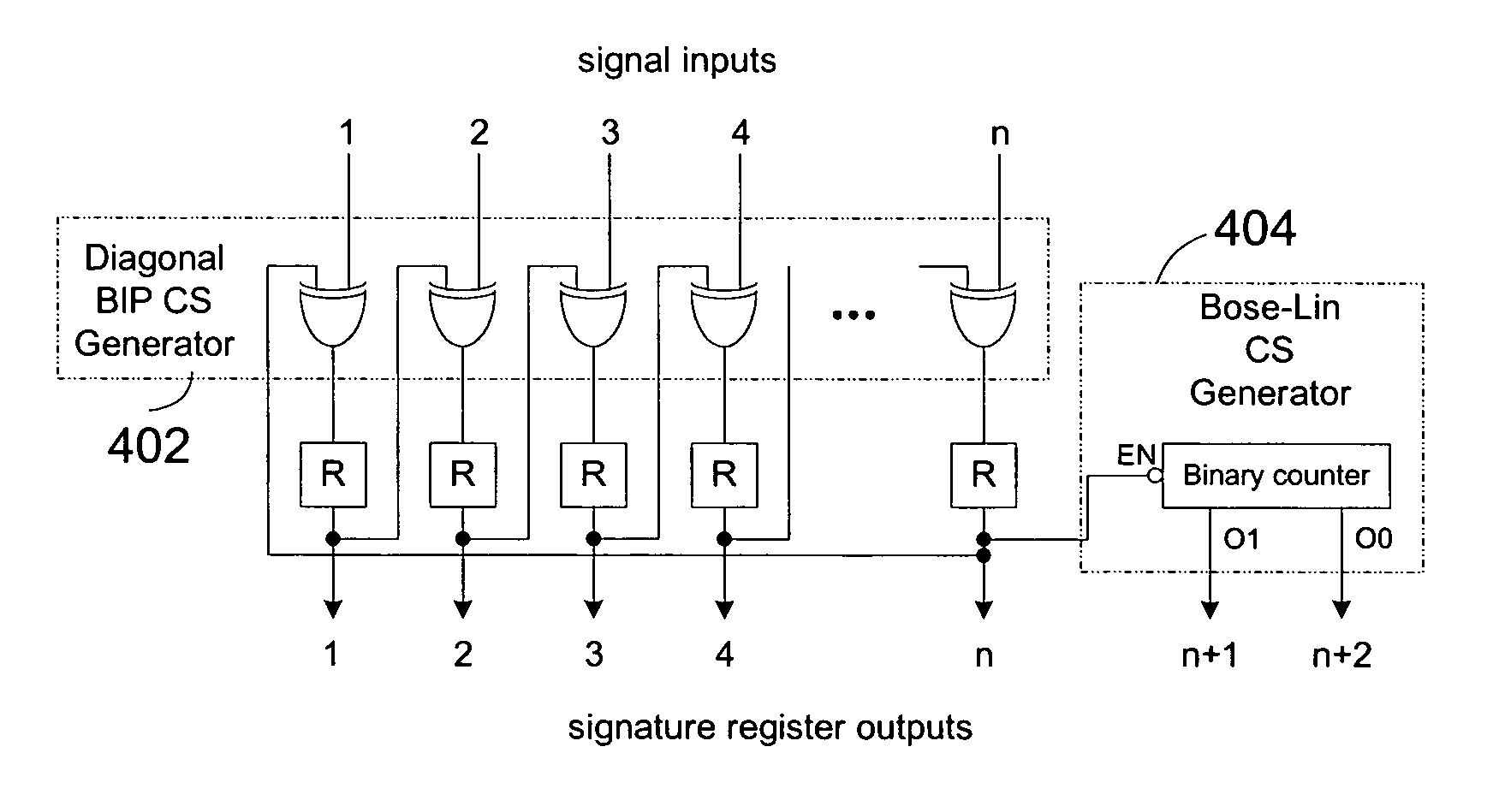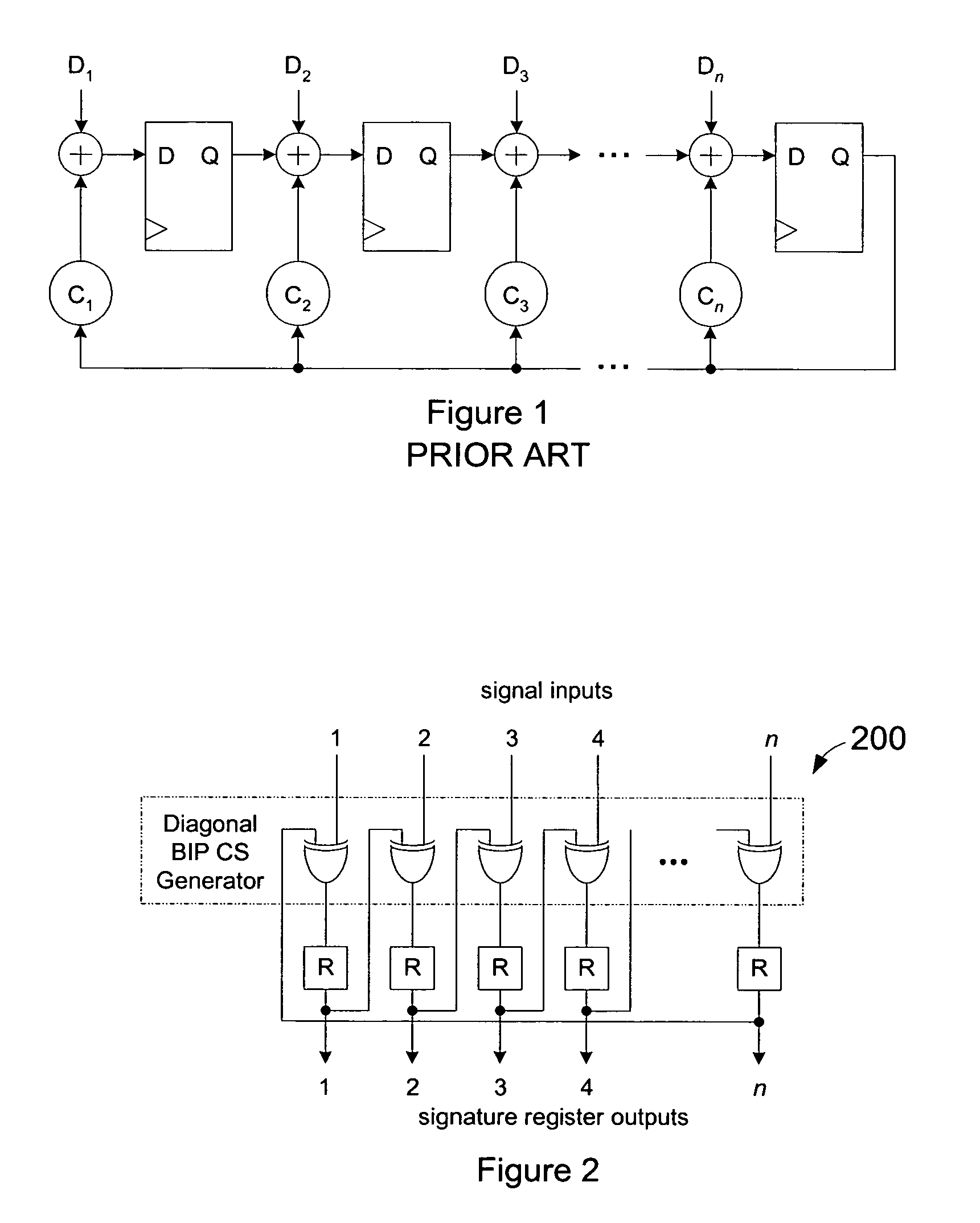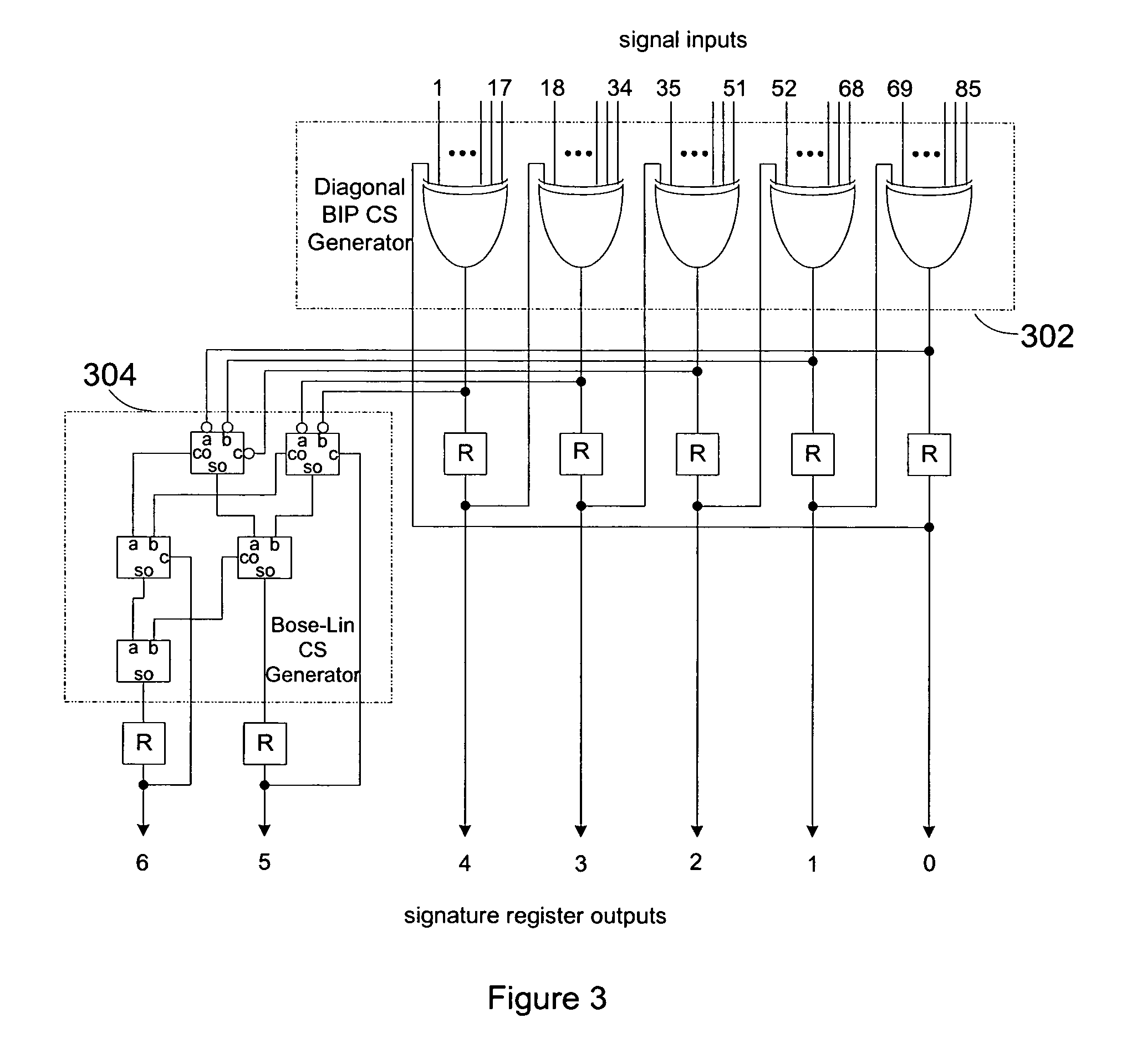Systems and methods for signature circuits
a signature circuit and circuit technology, applied in the field of integrated circuit testing, can solve the problems of increasing the propagation delay of the input of the misr's register, limiting the speed at which the test vector can be run, and reducing the load on a single register
- Summary
- Abstract
- Description
- Claims
- Application Information
AI Technical Summary
Benefits of technology
Problems solved by technology
Method used
Image
Examples
example applications and embodiments
[0054]FIG. 6 illustrates an example of an application for an embodiment of the invention. In this example, the signature circuit is used to monitor an internal bus in a system-on-chip integrated circuit. The signature circuit monitors the states of the address and data buses, and their associated control signals, for an embedded processor. The signature circuit should be capable of detecting any faults on these bus and control lines, and should also be able to detect any faults within the processor, or other circuits with which it communicates over the bus, that result in at least one different or unexpected value appearing on the bus during the course of the test. Appropriately written test vectors should lead to such different values appearing on the bus for faulty circuits. In the illustrated application, there is no need to have the signature circuit contain fewer bits than the number of bits in the data bus, which is typically the same as the internal register width.
[0055]As il...
PUM
 Login to View More
Login to View More Abstract
Description
Claims
Application Information
 Login to View More
Login to View More - R&D
- Intellectual Property
- Life Sciences
- Materials
- Tech Scout
- Unparalleled Data Quality
- Higher Quality Content
- 60% Fewer Hallucinations
Browse by: Latest US Patents, China's latest patents, Technical Efficacy Thesaurus, Application Domain, Technology Topic, Popular Technical Reports.
© 2025 PatSnap. All rights reserved.Legal|Privacy policy|Modern Slavery Act Transparency Statement|Sitemap|About US| Contact US: help@patsnap.com



